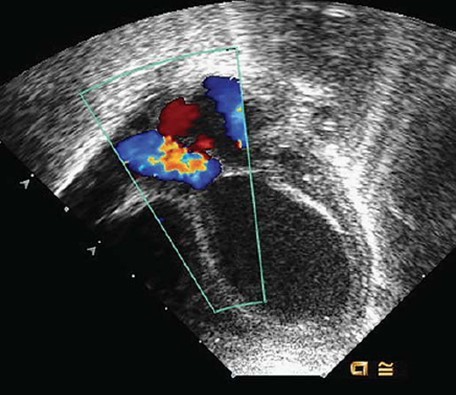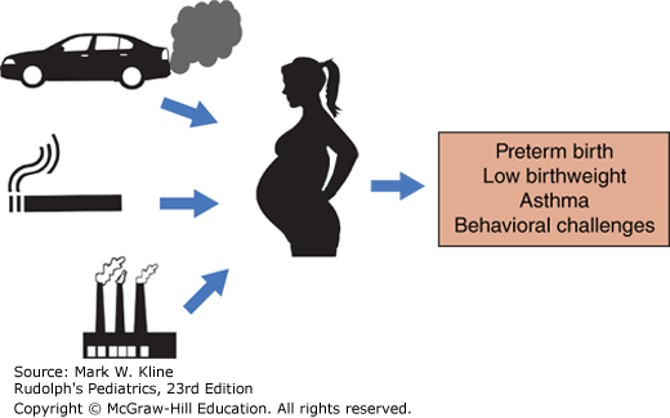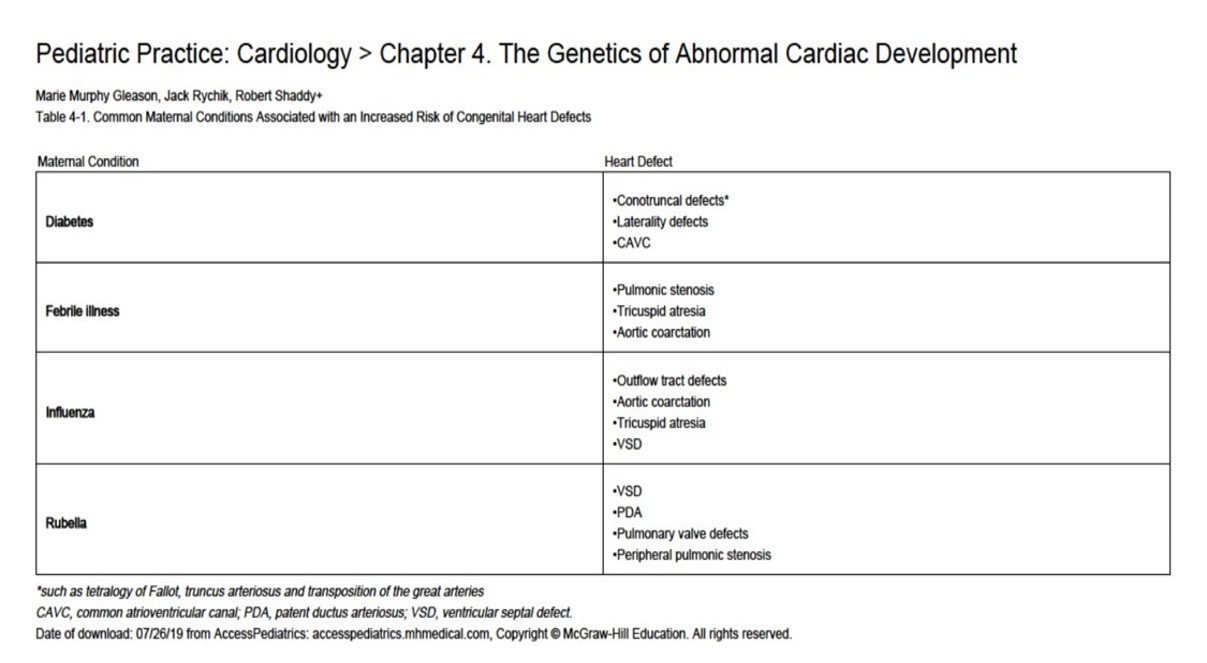Populations of Oil and Gas Producing Regions Have High Rates of Congenital Heart Defects

Congenital heart defects (CHDs) are some of the most common complications present in newborns. Infants born with CHDs are also more susceptible to other developmental disorders.
According to Science Daily, reporting on the Colorado School of Public Health study, "Mothers living near more intense oil and gas development activity have a 40-70% higher chance of having children with congenital heart defects compared to those living in areas of less intense activity." Mothers end up exposing themselves to toxic byproducts released from oil and gas sites, which can be especially harmful to embryos during early development.
Chapter 172: Environmental Exposures and Health in Rudolph's Pediatrics, 23e stresses that the genome of developing fetuses are more susceptible to these environmental factors. Exposure to these pollutants pose a much higher risk to unborn infants (Figure 172-3). The chapter also elaborates on different toxic pollutants such as Cadmium and Polycyclic Aromatic Hydrocarbons.

Previous studies also discovered a correlation between oil-producing regions and the onset of CHDs in infants. However, this study specified that environments created by oil and gas sites are conducive to the development of CHDs. They excluded infants with hereditary CHDs and pinpointed the location of mothers during early pregnancy with more certainty.
Chapter 4: The Genetics of Abnormal Cardiac Development in Pediatric Practice: Cardiology highlights the genetic underpinnings of CHDs. However, it also recognizes that most causes of CHDs are unknown, as shown in Figure 4-1 (top). Other known factors to contribute to the development of CHDs are illustrated in Table 4-1 (bottom).


The Colorado School of Public Health potentially discovered a new environmental cause of CHDs, in the form of air pollutants. However, this can be confirmed by distinguishing air pollutants released by oil and gas sites from other toxic factors. Nonetheless, some already speculate from this study that maternal exposure to the polluted air from these sites directly impairs fetal heart development.
The study was published by Environmental International and is open to the public.
Sources:
Figure 172-3: Kline MW. Rudolph's Pediatrics, 23e; 2018.
Chapter 4: D'Alessandro LA, Peyvandi S, Schachtner S, Goldmuntz E. Chapter 4. The Genetics of Abnormal Cardiac Development. In: Gleason M, Rychik J, Shaddy R. eds.Pediatric Practice: Cardiology New York, NY: McGraw-Hill; 2012. Accessed July 30, 2019.
Figure 4-1: Gleason M, Rychik J, Shaddy R. Pediatric Practice: Cardiology; 2012.
Table 4-1: Gleason M, Rychik J, Shaddy R. Pediatric Practice: Cardiology; 2012.
Figure 1-9 (Poster image): Wells RG. Diagnostic Imaging of Infants and Children; 2015.





Create a Free MyAccess Profile
AccessMedicine Network is the place to keep up on new releases for the Access products, get short form didactic content, read up on practice impacting highlights, and watch video featuring authors of your favorite books in medicine. Create a MyAccess profile and follow our contributors to stay informed via email updates.